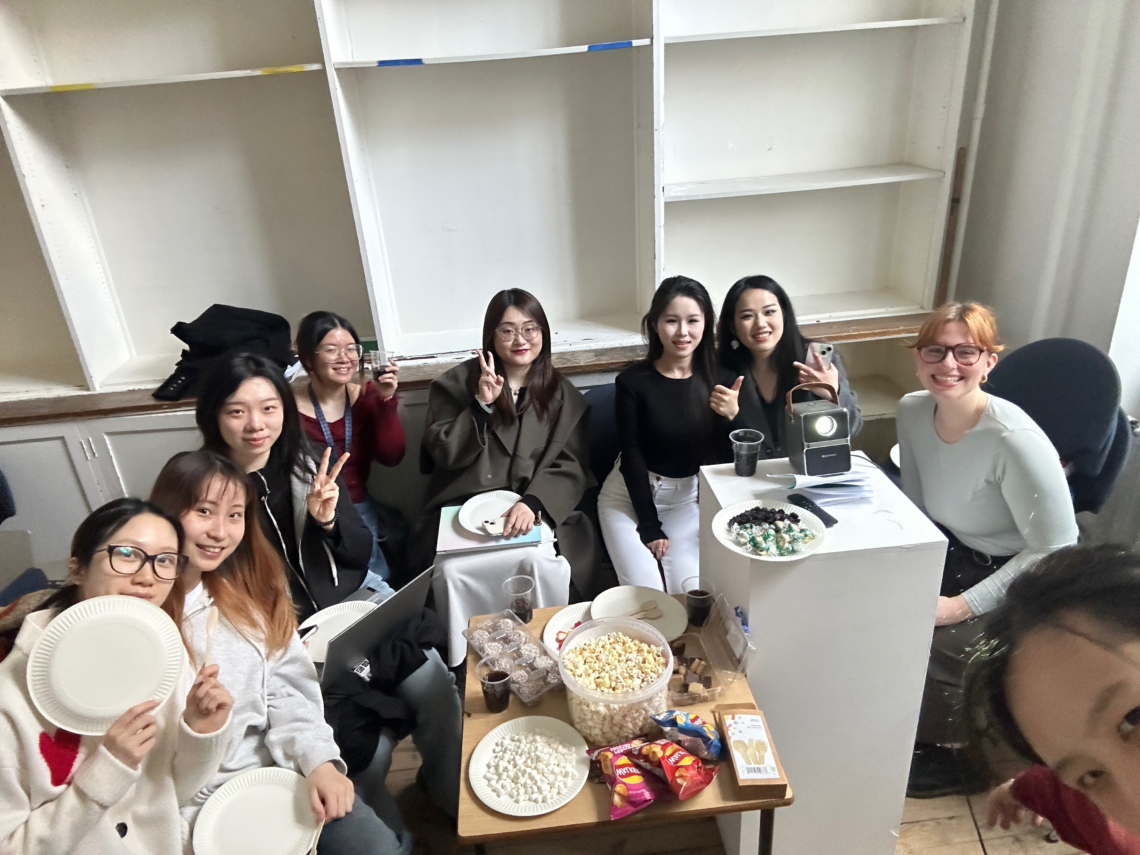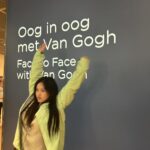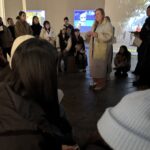Pushing open the glass doors of the exhibition hall, I was confronted by a dark brown wooden table with an old typewriter and a copper-tinted keyboard. Next to the table stood a sign: “Please define ‘intimacy’ in one sentence.” I sat down and clicked with my fingertips: “Intimacy is a handshake amid the rubble of data.” The machine then spit out a piece of paper printed with a QR code.

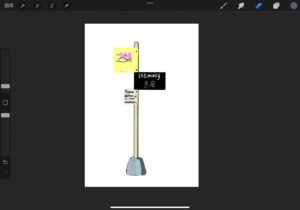
After the scan, a “wall of definitions” pops up on the screen, with anonymous sentences like shooting stars: “Intimacy is a 404 error after 24 hours” and “staring before the alcohol evaporates.” The words flow and collide on the wall, eventually condensing into a glowing nebula.
Theoretical note: This section echoes Sara Ahmed’s “departure from Phenomenology” in Week 9, where the textual input of the body becomes a rejection of normative definitions.
Bypassing the defining wall, I approach the central bar. On the bar was the Burning Dictionary, a heavy handmade book on recycled paper with a gold-plated crack pattern on the cover. Turning to the inside pages, there are already many key words written by the audience on the yellowed page: “control”, “fragile”, “silent algorithm”.
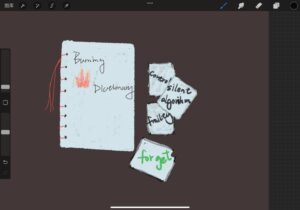
Books are placed on a wooden platform with a scanner hidden underneath. Every 30 minutes, the scanner reads the newly added words, triggering a wall projection: the words blur like ink and recompose into verses – “Power is dissolved sugar, we are reflections of each other.” With the rustle of the paper and the muffled electronic sound, the projected verses gradually break into pixelated particles and float into a virtual pool of data ash.
- The wall projection uses wooclap.
- Preserving the integrity of the physical book and rejecting physical destruction (echoing Transmission Gallery’s insistence on “print as a vehicle for dialogue” in Week 9).
- The digitally projected “virtual burning” avoids the risk of an open flame while continuing Sara Ahmed’s concept of “new Imprints” – the elimination of power without real ashes.
Stepping into the dim circular space, three walls cycle through fragmented yet violent cinematic montages: On the left, Martha Rosler’s “Semiotics of the Kitchen” plays – she hammers the knife onto the cutting board with military precision, as onion juice splatters onto the lens, subtitles flashing “Silence is the blade’s accomplice.” To the right, Michael Snow’s “Wavelength” torturously slow-zooms toward a seascape photo at the room’s end, electronic buzzing gradually shredding the air while the wall manifests “Space is a contracting wound.” The central wall screens Marina Abramović’s “Relation Works” – her and Ulay’s naked bodies repeatedly colliding with stone pillars, the dull thuds of flesh intercut with the subtitle “Pain is symmetrical power.” When all three films synchronize at 7 minutes and 30 seconds, the screens go black, leaving only a flickering QR code at the center.
Scanning it with your phone reveals a pitch-black webpage. Three columns of text fragments hover mid-air, harvested from the films:
Salmon: “In the absence of touch” / “Vulnerability in repetition” / “Love as a fractured mirror”
Crewe: “Control through silence” / “Identity as rupture” / “Disappearance of self”
Maclean: “The mask as violence” / “Public self as a prison” / “Democratization of distortion”
Dragging any phrases (say “Knife as violent punctuation” + “Symmetry of collision”) to the right canvas and clicking “Generate” instantly morphs them into a minimalist poster: Below the title “Provisional Manifesto,” your spliced sentence twists in glitch typography against a real-time surveillance feed of the projection area – shadowy figures of other visitors now blur across walls. Clicking “Download” delivers a PDF timestamped “Manifesto_20250327_214557,” its footer noting: “This file will lock as read-only in 24 hours and archive to the Week 9 Collective Memory Bank.”
Looking back before leaving, every film frame now appears sliced open by your manifesto – Salmon’s vulnerability dissolves into Crewe’s fractured identity, Maclean’s critique twists into an aching call for personal liberation.
[Film workshop connection: Our March 20 group’s film experiments at Summer Hall revealed how fractured montage exposes power dynamics more ruthlessly than coherent narratives.]
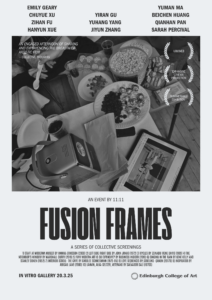
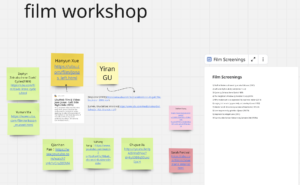
Down the stairs, the damp smell of tape filled the common room in the basement. A red tape recorder stood in the corner, and I pressed the button and whispered, “Winter 2023, I deleted all chats.” The whispers, they were told, would be mixed into background noise for the independent magazine Noise Archaeology. The latest issue is spread out on a wooden stand, with a distorted sonogram printed on the inside page. After scanning a QR code, a stray sentence rustles through an earpiece: “… He said it was the last time…” “… It’s raining hard, like data is crashing…”
Theoretical footnote: The magazine design draws on the “kit” concept of Serpentine’s How We Hold in Week 9, turning noise into a collective archive of resistance.
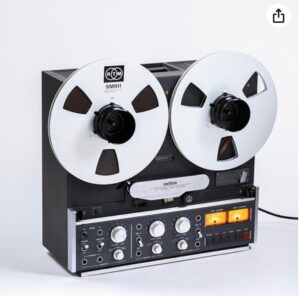
RTM Studio Master Recording SM 911 ¼ inch – Reel to Reel Magnetic Tape for Audio Recording – 762m NAB Metal Reel – 10.5 inch (26,5cm) Diameter Features Picture from
At the exit, I received an ash-textured postcard. Its front bore the shadow of burning paper, while the reverse read: “If intimacy were a publication, who would script your edition?” A line of fine print in the lower right corner noted: “Issue 3 of Grammar of Ashes releases tomorrow – check your inbox.”
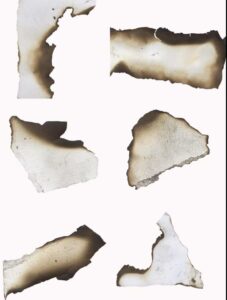
Exhibition Epilogue
This exhibition functioned as a meticulously choreographed “publishing act” – from typing definitions to incinerating manifestos, from archiving noise to perpetuating correspondences. Each phase transformed viewers into provisional authors, while authority continually dissipated within the cyclical generation and destruction of data. The ninth week’s theories morphed from wall texts into tangible entities – tactile, combustible, collectible. Leaving the gallery, I recalled Sara Ahmed’s words: “To deviate is both to refuse a trajectory and to script alternative possibilities.” Perhaps this encapsulates the ultimate significance of curation-as-publishing: we co-author, then collectively set the pages aflame.
